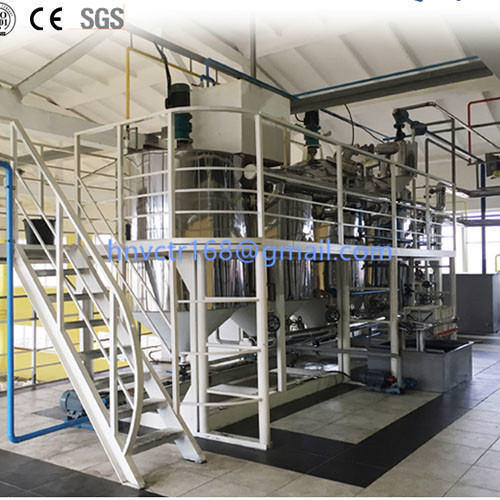The effect of linoleic acid ratio on the thermal stability of oils and fats

At present, most of the blended oils on the market are edible blended oils that balance saturated fatty acids, monounsaturated fatty acids, and polyunsaturated fatty acids with nutrition and metabolism. Among them, polyunsaturated fatty acids are mainly linoleic acid and linolenic acid. Linoleic acid is more unstable than linoleic acid and oleic acid, but linolenic acid is an essential fatty acid with unique nutritional functions. Linoleic acid is also an essential fatty acid, and the ratio of linoleic acid to linolenic acid has an impact on cardiovascular disease.
Therefore, in order to improve the thermal stability of the linolenic acid oil, increase the temperature tolerance, and enrich the nutritional requirements, the blending oil can be prepared by adjusting the ratio of linoleic acid and linolenic acid to meet the nutritional dietary needs of residents. Studies have pointed out that fatty acid composition will affect the oxidation stability of oils. Fatty acids with higher degrees of unsaturation are more prone to oxidation.
When studying the oxidation stability of different varieties of sunflower oil, it was found that sunflower oil with a high content of linoleic acid and tocopherol has high oxidation stability, suggesting that increasing the content of linoleic acid may improve the high-temperature frying properties of the oil.
The oxidation reaction of oil in the heating process is often accompanied by changes in system quality. The oxidation process can be judged by measuring the changes in system quality during the heating process. Some researchers have also compared the oxidation stability of oils and fats under different environmental conditions through thermogravimetric analysis, and calculated the oxidation life of oils and fats through kinetic parameters, and calculated the oxidation kinetics of oils and fats by thermogravimetric method.
In this study, by adjusting the fatty acid composition, a nutritious and high temperature resistant blended oil was prepared to improve the oxidation stability of the oil. Using linseed oil, soybean oil, and corn oil as raw material oils, according to the ratio of linoleic acid and linoleic acid in oils recommended by "Chinese Residents Dietary Guidelines", a nutritious and high-temperature-resistant blended oil is prepared. The thermal oxidation stability of the blended oil is analyzed by the acid value, peroxide value, color and TG-DSC.
In this study, soybean oil, corn oil and linseed oil were used as raw material oils to prepare a blended oil with a ratio of linoleic acid and linoleic acid of about 1:4, which contained 48% soybean oil, 37% corn oil, and 15% linseed oil.
Under the condition of 180 ℃, with the extension of heating time, the acid value of blended oleic acid increased slightly, higher than corn oil and soybean oil, but lower than linseed oil. The peroxide value of blended oil, soybean oil and corn oil gradually increased with the extension of heating time, while the peroxide value of linseed oil first increased and then decreased. The color of blended oil was slightly darker than corn oil and linseed oil. Compared with linseed oil, the oxidation stability of blended oil at 250 ℃ is improved, and the red value of blended oil increases more slowly.














